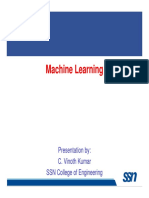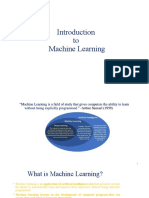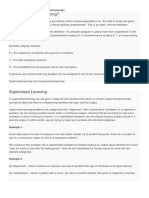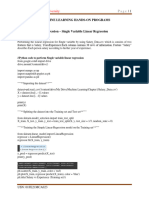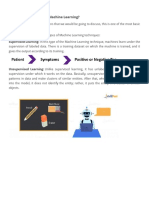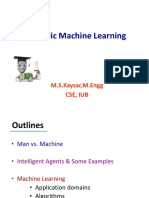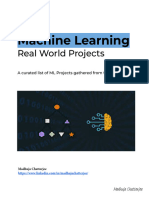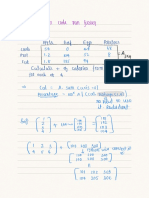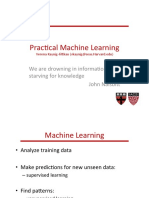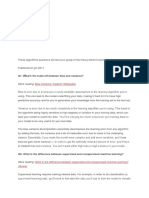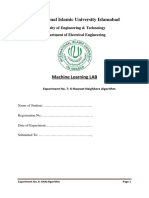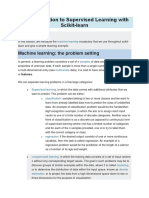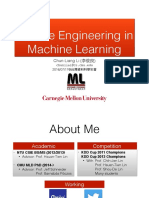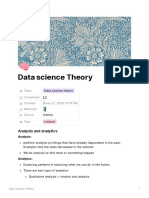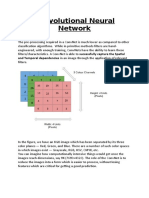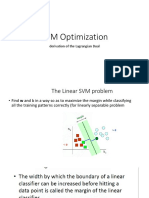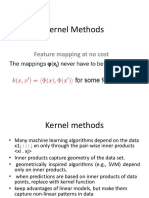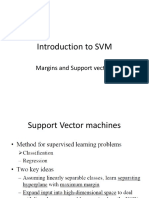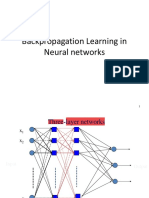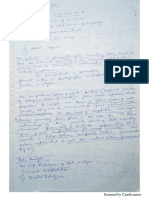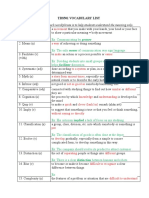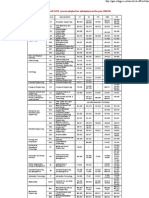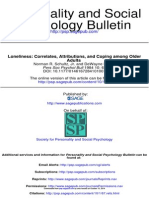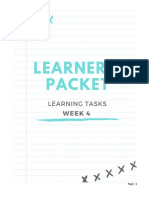100% found this document useful (1 vote)
226 views39 pagesIntroduction To ML
Machine learning is a branch of artificial intelligence that uses algorithms to identify patterns in data and learn from that data in order to make predictions or decisions without being explicitly programmed. The goal of machine learning is for computers to be able to learn from examples or past experiences to improve their performance on some task. Some key aspects covered in the document include the different types of machine learning tasks like classification, clustering, and prediction, as well as the basic components of a machine learning system like the hypothesis space, search strategy, and evaluation method.
Uploaded by
Pooja PatwariCopyright
© © All Rights Reserved
We take content rights seriously. If you suspect this is your content, claim it here.
Available Formats
Download as PDF, TXT or read online on Scribd
100% found this document useful (1 vote)
226 views39 pagesIntroduction To ML
Machine learning is a branch of artificial intelligence that uses algorithms to identify patterns in data and learn from that data in order to make predictions or decisions without being explicitly programmed. The goal of machine learning is for computers to be able to learn from examples or past experiences to improve their performance on some task. Some key aspects covered in the document include the different types of machine learning tasks like classification, clustering, and prediction, as well as the basic components of a machine learning system like the hypothesis space, search strategy, and evaluation method.
Uploaded by
Pooja PatwariCopyright
© © All Rights Reserved
We take content rights seriously. If you suspect this is your content, claim it here.
Available Formats
Download as PDF, TXT or read online on Scribd
/ 39
